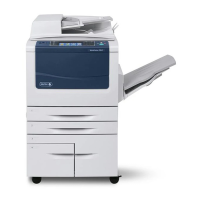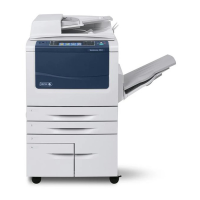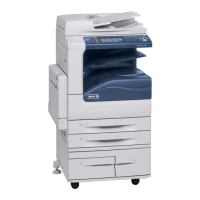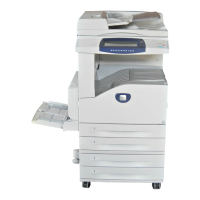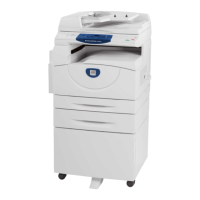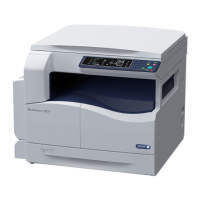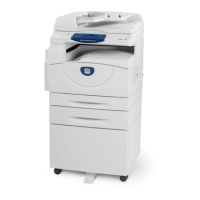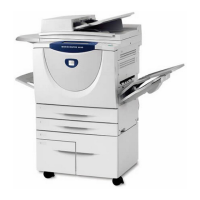Xerox Multi-Function Device Security Target
79
Copyright
2013 Xerox Corporation. All rights reserved.
Operation: A specific type of action performed by a subject on an object.
Operational Environment: The total environment in which a TOE operates,
including the consideration of the value of assets and controls for operational
accountability, physical security and personnel.
Operator Panel: A local human interface used to operate the HCD. It
typically consists of a keypad, keyboard, or other controls, and a display
device.
Organizational Security Policy (OSP): A set of security rules, procedures,
or guidelines imposed (or presumed to be imposed) now and/or in the future
by an actual or hypothetical organization in the operational environment.
Original Document Handler: Mechanisms for transferring User Document
Data in hardcopy form into the HCD.
Own or Ownership: May refer to a User Document or to User Function Data
associated with .processing a User Document. Depending upon the
implementation of conforming TOE applications, the Owner of a User
Function Data associated with a User Document may be different or may
have different access control rules. These should be specified in a
conforming Security Target.
Private-medium interface: Mechanism for exchanging data that (1) use
wired or wireless electronic methods over a communications medium which,
in conventional practice, is not accessed by multiple simultaneous users; or,
(2) use Operator Panel and displays that are part of the TOE.
Protected: A condition in which data has not been changed or destroyed in
an unauthorized way.
Removable nonvolatile storage: nonvolatile storage that is part of an
evaluated TOE but is designed to be removed from the TOE by authorized
personnel. See also Nonvolatile storage.
Security attribute: A property of subjects, users (including external IT
products), objects, information, sessions and/or resources that is used in
defining the SFRs and whose values are used in enforcing the SFRs.
Security Function Policy (SFP): A set of rules describing specific security
behavior enforced by the TSF and expressible as a set of SFRs.
Security Functional Requirement (SFR): A functional requirement which is
taken from Part 2 of the Common Criteria and provide the mechanisms to
enforce the security policy.
Security Target (ST): An implementation-dependent statement of security
needs for a specific identified TOE.
SFR package: A named set of security functional requirements.
Shared-medium interface: Mechanism for transmitting or receiving data that
uses wired or wireless network or non-network electronic methods over a

